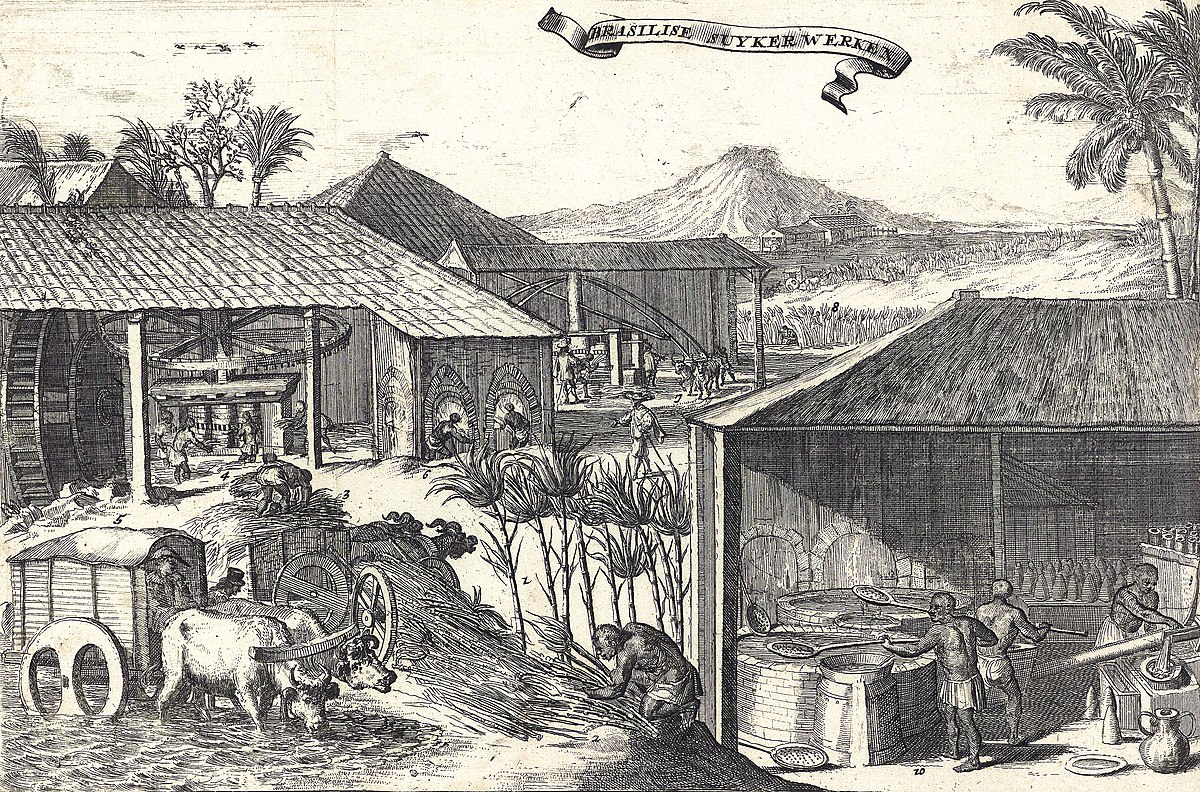
Sugar Empires
Pernambuco, BrazilPortuguese traders had first introduced sugarcane to the Americas in the 1500s. Portugal had pioneered the plantation system in the Atlantic islands of Madeira and São Tomé, and because the sugar produced from Brazilian plantations was used for an export market, this necessitated land that could be acquired with little conflict from existing occupants. By the sixteenth century, sugarcane plantations had been developed along the northeast coast of Brazil, and the sugar produced from these plantations became the basis of the Brazilian economy and society. By 1570, Brazil's sugar output rivaled that of the Atlantic islands.
At first, the settlers tried to enslave the native peoples to work the sugarcane fields, but this proved to be difficult, so they turned to using slaves instead. Slave labor was the driving force behind the growth of the sugar economy in Brazil, and sugar was the primary export of the colony from 1600 to 1650.
In the mid-seventeenth century, the Dutch seized productive areas of northeast Brazil, and because the Dutch were expelled from Brazil, following a strong push by Portuguese-Brazilians and their indigenous and Afro-Brazilian allies, Dutch sugar production became the model for Brazilian sugar production in the Caribbean. Increased production and competition meant that the price of sugar dropped, and Brazil's market share dropped. However, Brazil's recovery from the Dutch incursion was slow, as warfare had taken its toll on the sugar plantations.
